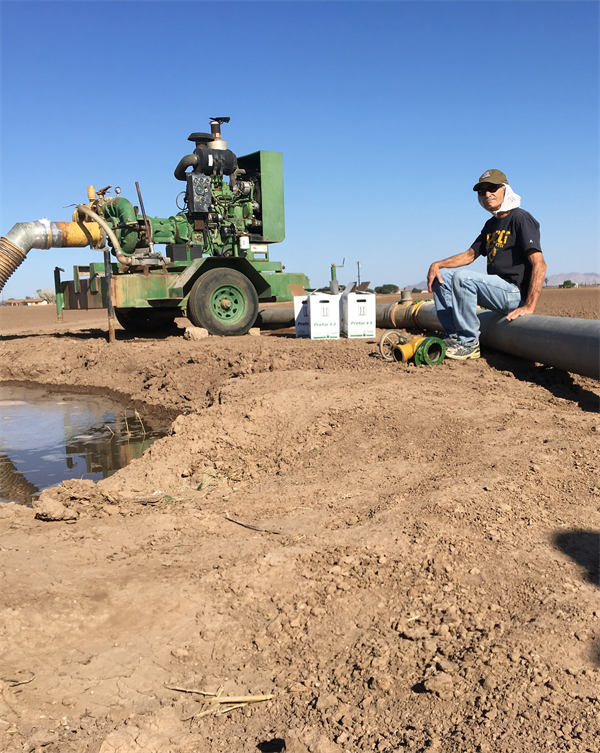Dec 9, 2020
Bacterial Leaf Spot

With harvesting time getting closer to many field crops now, we are seeing higher incidence of bacterial diseases. We had few reports of bacterial spot on lettuce, cilantro, arugula, and parsley. Most times bacterial symptoms are not expected or simply ignored because we think the desert is too dry and bacterial diseases require high humidity. But as the plants grow bigger the space and aeration in between plants decreases, thus creating a humid microclimate. It is even more common on produces/herbs like cilantro, arugula, parsley etc. where the crops are grown densely, and sprinkle irrigation is used.
Initial symptoms of bacterial leaf spot are water-soaked lesions on leaves. The lesions develop into spots that are varying shades of tan or brown (see picture ‘B’ on parsley whereas advanced spots on cilantro can be black (see picture ‘A’ on cilantro). The lesions are usually limited by leaf veins and thus have an angular, square, or rectangular appearance, a typical feature of bacterial infection. Lesions tend to be relatively small about 1/8 to 1/4 inch (3–6 mm) in diameter and are visible from both the top and bottom of leaves. Under favorable conditions, free moisture from rain or sprinkler irrigation, leaf spots may coalesce and cause considerable blighting of the entire foliage.
Pseudomonas syringae pv. apii (Psa) and P. syringae pv. coriandricola (Psc). cause bacterial leaf spot on most vegetable. Pseudomonas syringae pv. apii (Psa) can cause leaf blight in celery and fennel as well. Though the problem is documented as more of a problem in cilantro and less in celery, in severe condition the disease can result in unmarketable produce in any host. The bacteria can be seedborne. However, water from rain, sprinkler irrigation, and heavy dews and fogs will splash bacteria from infected plants onto adjacent healthy foliage resulting in heavy infestation.
To manage the disease, always use tested/treated seeds, rotate crop with non-host to reduce inoculum level, switch from sprinkler to furrow irrigation to limit secondary spread, avoid excessive use of nitrogen fertilizer. If sprinkle irrigation has to be used, use light and more frequent irrigation, or irrigate in the morning or early afternoon so the plants dry off during the day. Copper spray/copper based fungicide provide limited control against the pathogens.
In next few weeks in the Clinic:
Because of the recent increase of Covid-19 related cases in Yuma, the Yuma Ag center is open only in limited capacity. Samples have to be dropped in the bench outside the main building. Please fill out the form provided when you drop samples. Our last day to take samples in the clinic for 2020 will be 18th of December. We will be using the remaining few days of the year to update the lab records, data, and prepare for 2021. Thank you for your love, support, and patience this year.
The Yuma Plant Health Clinic and Plant Pathology program wishes you safe and happy holidays!
To contact Bindu Poudel go to:
bpoudel@email.arizona.edu









